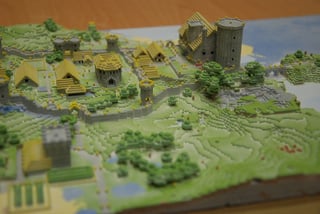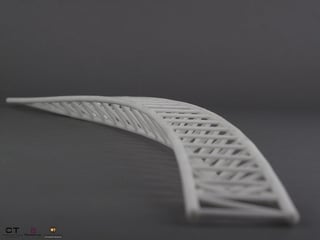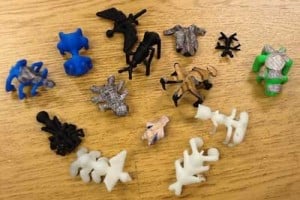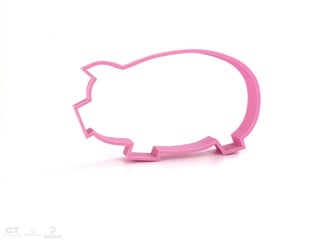To celebrate today’s kickoff of the Maker Education Webinar Series — "3D Printing to Improve Learning Outcomes" — we’re taking a look at the Top 5 things you can do with a 3D printer in the classroom (plus a bonus).
When using a 3D printer in school, or any maker education tools, it’s important to ensure students are actually learning from the process. Which means they need to do more than find a neat design online and print it out. There needs to be some consideration that goes into what is being printed. The ideas below ensure students spend time thinking about the design they are printing and are able to learn multiple skills from engineering to geography to math through the process of 3D printing.
1. Create Maps
 Photo Credit: post-apocalyptic research institute
Photo Credit: post-apocalyptic research institute
Challenge students to design and print a map related to something you are studying. This could mean a map of different ecological regions, a map of their neighborhood or even a map of a fictional place based on a literary work being studied.
2. Study Historical Technology
Many middle schoolers study catapults as part of a lesson on medieval times. Take it one step further by printing a few versions of classic designs for students to study and then challenging them to create a better version of the classic catapult, from conception to build.
3. Design Bridges
 Photo Credit: Creative Tools
Photo Credit: Creative Tools
The bridge-building challenge is a classic, but why not change it up from toothpicks and marshmallows and have students design and 3D print a bridge that can withstand a certain amount of pressure or weight placed on it. Students put their engineering knowledge to the test to design a structure that is not only functional but looks good too. The same idea can also be used to create boats.
4. Build Fraction-Learning Tools
This one is especially great for younger students who are just learning about fractions. Have students design and print a set of manipulatives they can use to remember how fractions work. This allows students to not only see the size difference between one half and one third, but to hold them in their hands and really get a feel for how fractions combine to make a larger number.
5. Create a New Species
 Photo Credit: Clark Barnett at Conejo Valley Unified School District
Photo Credit: Clark Barnett at Conejo Valley Unified School District
Clark Barnett, an educator and education technology consultant in Thousand Oaks, California, challenged his students to design and print their own bugs in order to teach them about entomology and ecosystems. This challenge required students to think about the engineering behind creating a bug, including designing legs that could support the body. This same idea could be used to have students create their own animal, real or imaginary, as well as plants.
To show that 3D printers aren’t just for your standard classes, here’s a bonus idea for food classes.
Bonus: Create Molds for Foods

Photo Credit: Creative Tools
These can range from custom cookie cutters to chocolate molds or cake stands. Designing a custom mold or container for the food they create allows students to add a piece of their personality to the cooking process and provides a chance to bring some extra math and science into food studies. And how about a cake topper just for fun? The sky's the limit!
What projects have you 3D printed with your students? Please share in the comments below.


teaching tools, Maker Education, student projects, getting started, STEAM